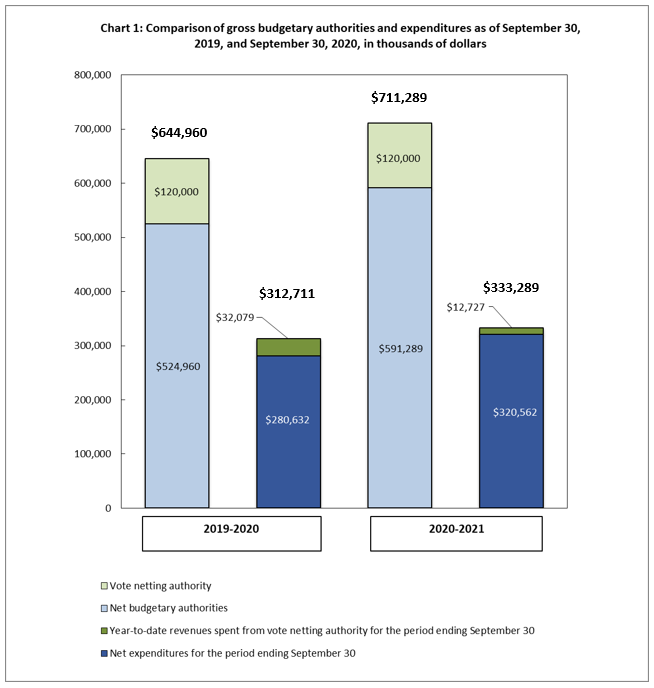Canadian Statistics Advisory Council 2020 Annual Report - Towards a Stronger National Statistical System
Release date: October 23, 2020
Message from the Canadian Statistics Advisory Council
The Canadian Statistics Advisory Council (CSAC) was created as part of a suite of amendments to the Statistics Act in 2017 designed to enhance the independence of Statistics Canada, Canada's national statistical organization. In June 2019, the first slate of Council members was appointed by the Governor in Council.
As with any newly created body, part of our first year has involved establishing ourselves as a group, defining our agenda and finding our voice. CSAC's statutory mandate includes providing advice to the Minister of Innovation, Science and Industry and to the Chief Statistician of Canada. It also requires us to produce an annual report on the state of Canada's statistical system. Our mission is to provide impartial and independent advice to ensure the quality, relevance and accessibility of the national statistical system.
We are grateful to Statistics Canada, the Chief Statistician of Canada who is an ex-officio member of the Council, and his excellent team for responding to our many requests for information with both written and oral presentations. We would like to offer our very particular thanks to Melanie Forsberg, Robert Andrew Smith and Kacie Ha of the CSAC Secretariat for their advice and assistance. We are also especially grateful for the work of Dr. Teresa Scassa, the Council's initial chairperson, who shaped and guided the work of the committee.
The COVID-19 pandemic altered the course of our work, as it did for all Canadians and people around the world. The pandemic brought into stark relief many of the statistical challenges that Statistics Canada has faced as an agency and Canada has faced as a nation. Decision makers were hampered by a lack of timely, consistent and disaggregated data in areas such as health care and on racialized Canadians and Indigenous peoples. This situation highlighted the broader need for high-quality statistical information to address nationwide health issues and socioeconomic inequities. Collecting these data while respecting the privacy of Canadians' personal information remains of key importance.
We trust that our report and recommendations will be accepted by the Minister on behalf of the Government of Canada, and will provide Canadians with a better understanding of the need to strengthen Canada's national statistical system, and ensure more evidence-based decision making, resulting in benefits to all Canadians.
Signed: The Canadian Statistics Advisory Council
- Annette Hester
- Dr. Céline Le Bourdais
- David Chaundy
- Gail Mc Donald
- Gurmeet Ahluwalia
- Dr. Howard Ramos
- Jan Kestle
- Dr. Michael C. Wolfson
Executive summary
Statistics Canada's central role as an independent national statistical organization has never been more critical to meeting the need for timely and high-quality statistics in Canada. Having an independent and trusted source of official statistics provides a solid foundation for government accountability and evidence-based decision making by both the public and the private sectors for the benefit of all Canadians.
The fast pace of social and economic change is affecting the kinds of data and analyses Canadians need. There has also been a dramatic shift in how Canadians receive information, with a proliferation of information from new sources, such as social media. New tools are being used to collect, process, transform and visualize information. For Canada to succeed in this dynamic digital economy, Statistics Canada must play a central leadership role, coordinating with governments and organizations to produce coherent and trusted national statistical information.
Canadians have provided personal data to Statistics Canada for over 100 years. The confidentiality of their information is protected under the Statistics Act, and, under federal data protection laws, Statistics Canada must respect the privacy of Canadians. There should be no conflict between respect for the privacy of Canadians and the need for Canadians to provide data to Statistics Canada.
Recommendation 1:
Including statistical data requirements in planning federal government programs
There is presently no standard or coordinated way to assess priority data requirements within the federal government. There needs to be a fundamental shift in how statistical data needs in Canada are assessed. This includes greater consideration of how social, health, economic, environmental and energy factors collectively contribute to the well-being of Canadians and Canadian society.
It is recommended that the Minister of Innovation, Science and Industry
1.1 Ensure that statistical data requirements and funding are explicitly included in the planning for all federal government programs.
Recommendation 2:
Addressing critical data gaps
Critical data gaps and a lack of coordinated data in Canada seriously undermine the ability of decision makers and governments at all levels, as well as the general public, to understand and address key social, health, economic, environmental and energy issues facing Canadians.
Two priority areas are gaps in health and health care data in Canada, and gaps in data by race and Indigenous peoples—while respecting existing and future processes with Indigenous jurisdictions—on topics including gender, disabilities, education, employment, health, income, justice, safety, the environment, energy, community infrastructure and social well-being.
It is recommended that the Minister of Innovation, Science and Industry
2.1 invest in coordinating data collection across federal, provincial, territorial and other levels of government and organizations to build a truly national data infrastructure (including, in accordance with Recommendation 1, providing Statistics Canada with the necessary funds to develop modern real-time software and communications technologies to collect these data)
2.2 implement in the various fiscal arrangements with the provinces and territories adequate and effective mechanisms (which could include funding, incentives and penalties) to ensure that nationally consistent data can and do flow to Statistics Canada, pursuant to its mandate.
Recommendation 3:
Rectifying serious imbalances in funding national statistical programs
Statistics Canada is given the resources to produce economic indicators for about 20 key areas of economic activity. There are imbalances and inefficiencies in how data needs in other domains are addressed. Many of the agency's key social statistics programs, and certain economic, environmental and energy programs, are largely dependent on ad hoc funding and cost-recovery transfers from federal departments. Stable core funding for these programs is essential to support a national data strategy that includes all factors affecting society and the economy.
It is recommended that the Minister of Innovation, Science and Industry
3.1 consider options to ensure that Statistics Canada's core funding includes resources for social, economic, environmental and energy statistics programs, including the long-form census questionnaire, household surveys, administrative data, research and analysis, without having to rely on ad hoc cost-recovery transfers from departments.
Recommendation 4:
Ensuring the privacy of Canadians and the need for Canadians to provide data to Statistics Canada
Statistics Canada has the legal authority to collect federal, provincial and territorial data under the Statistics Act. Most jurisdictions include provisions in their data protection laws to permit data sharing for statistical purposes. The act also gives the agency the authority to collect data from private sector sources, in conjunction with government data, to provide a multifaceted statistical portrait of the country. The confidentiality of this information is protected under the Statistics Act.
There should be no conflict between respect for the privacy of Canadians and the need for Canadians to provide data to Statistics Canada.
It is recommended that
4.1 Statistics Canada and the Minister of Innovation, Science and Industry work with the Minister of Justice, informed by the Privacy Commissioner of Canada and by Indigenous jurisdictions, to ensure that federal, provincial and territorial data protection laws and policies are attentive to the imperative of data sharing for statistical purposes, and to ensure that there are no legislative ambiguities with regard to Statistics Canada's authority under the Statistics Act to collect data from federal, provincial and territorial jurisdictions
4.2 Statistics Canada and the Minister of Innovation, Science and Industry start a dialogue with Canadians on the importance of data for evidence-based decision making, and on how the collection of these data must respect data protection laws and the confidentiality of Canadians' personal information
4.3 Statistics Canada proceed, with support from the Minister of Innovation, Science and Industry, with its projects to develop new data sources from financial and credit institutions, in accordance with the agency's methodological framework on necessity and proportionality, and inform Canadians why these data are needed and how they will be collected and stored.
Recommendation 5:
Modernizing microdata access
The need for a modern infrastructure to access Statistics Canada's microdata, including secure remote access, has never been greater, as duly authorized researchers undertake statistical analysis to inform governments and Canadians.
It is recommended that the Chief Statistician
5.1 give high priority to and accelerate the modernization of the Microdata Access Program, including providing secure remote access by duly authorized researchers to its anonymized microdata and streamlining the current authentication process for granting secure access to Statistics Canada's microdata.
1. Introduction
Statistics Canada's central role as an independent national statistical organization has never been more critical to meeting the need for timely and high-quality statistics in Canada. Having an independent and trusted source of official statistics provides a solid foundation for government accountability and evidence-based decision making by both the public and the private sectors for the benefit of all Canadians. These decisions affect everybody's daily lives, including their health, where they live, where they work and their wages.
Fundamental to public trust is the clear independence of the country's national statistical office, where high-quality statistics and pertinent statistical analyses are produced with objective methods and with outputs that are accessible to everyone. The requirement that statistical information not be subject to political pressure and not serve special interests must be well recognized. This way, even people who may not trust their government can trust the statistical results and, just as importantly, entrust their information to Statistics Canada.
Canadians have provided personal data to Statistics Canada for over 100 years. The confidentiality of their information is protected under the Statistics Act, and, under federal data protection laws, Statistics Canada must also respect the privacy of Canadians. There should be no conflict between respect for the privacy of Canadians and the need for Canadians to provide data to Statistics Canada.
"Statistics Canada's central role as an independent national statistical organization has never been more critical to meeting the need for timely and high-quality statistics in Canada."
The fast pace of social and economic change is affecting the kinds of data and analyses Canadians need. For example, with the growth of online shopping, Statistics Canada requires new methods to measure consumer spending. Data on consumer spending are used to produce the Consumer Price Index, which Canadians depend on as a measure of inflation that affects wages, pensions, the cost of goods and interest rates. There has also been a dramatic shift in how Canadians receive information, with a proliferation of information from new sources, such as social media. New tools are being used to transform and visualize information, with significant increases in the flows of information, the extent of interconnectedness, and the development of increasingly powerful artificial intelligence software.
Not all available data sources are of good quality, nor do they all take measures to protect the privacy of personal information. Big datasets (usually characterized by their high volumes of data, speed of updates and variety of formats) and web-scraped data (data extracted from websites) are important new sources of data. However, their value for statistical analysis often has significant limitations, such as the underrepresentation of people with certain social or economic characteristics.
For Canada to succeed in this dynamic digital economy, Statistics Canada's role is key. The agency not only has the mandate to produce high-quality national social and economic measures, as well as more disaggregated statistical portraits, it also must play a central leadership role in coordinating data collection and integration with governments and organizations to produce coherent national statistical information for the benefit of all Canadians. This includes supporting leading-edge analysis of this statistical information.
Statistics Canada is responding to these challenges by developing, piloting and deploying new data sources, collection techniques and modelling to add depth and agility to its statistical programs. It has also engaged with Canadians in new ways—for example, using social media to encourage participation in web panel surveys and crowdsourcing surveys. At the same time, the federal government needs to seriously commit to starting a dialogue to address persistent, systemic data gaps. In some key sectors, fragmented data and an unwillingness to share data across jurisdictions have hampered Statistics Canada's ability to create needed nationwide datasets on a timely basis to address the country's most complex and dynamic challenges.
2. National data strategy
Recommendation 1:
Including statistical data requirements in planning federal government programs
There is presently no standard or coordinated way to assess priority data requirements within the federal government. There needs to be a fundamental shift in how statistical data needs in Canada are assessed. This includes greater consideration of how social, health, economic, environmental and energy factors collectively contribute to the well-being of Canadians and Canadian society.
It is recommended that the Minister of Innovation, Science and Industry
1.1 Ensure that statistical data requirements and funding are explicitly included in the planning for all federal government programs.
Nationwide data are a key strong foundation for decision makers and governments at all levels, as well as the general public, to understand and address important social, health, economic, environmental and energy issues facing Canadians.
Canada does not have a proactive national data strategy that considers the information needs of both today and the future and that puts in place new data sources to inform and anticipate emerging issues and concerns. Throughout its history, Statistics Canada has continually modernized its statistical programs to provide Canadians with the nationwide data and statistical information they need.
Its current modernization initiative is in response to a rapidly evolving digital economy and society. However, there are important data gaps in sectors such as health, energy and the environment, and a lack of sociodemographic detail, including about racialized and Indigenous groups, in social and economic indicators.
New governance mechanisms are required to formally open new dialogues on national data needs and how to best collect and share this information. This must be led by Statistics Canada, in accordance with its mandate, with the full support and funding of the federal government. It must also include all levels of government and statistical organizations. Without a national data strategy, bureaucratic inertia and other hindrances to collecting and sharing statistical information across jurisdictions will continue to outweigh efforts to develop needed nationwide data accessible to all Canadians.
A national data strategy could include First Nations, Inuit and Métis organizations that are planning, implementing and exercising control over the delivery of services to their communities. The nature of the data and analytical skills they require is changing and is more specific to regional and local issues that affect their peoples. Collection for new data needs could be done in partnership with Statistics Canada and other departments. This includes, for example, the need for data to support indicators of well-being, resiliency, understanding, and measurable progress on reconciliation and economic measures.
Statistics Canada is well positioned to lead the various dialogues on national data and information needs. Its proven operational infrastructure provides an essential foundation, given that the agency has developed statistical data from hundreds of federal, provincial and territorial administrative data files. Its expertise in developing high-quality data using standardized concepts and classifications is recognized internationally. Statistics Canada also has the ability, with the required confidentiality protections in place, to combine and link these data with data from other sources to produce the statistical information needed to address national data gaps.
"Nationwide data are a key strong foundation for decision makers, governments and the general public to understand and address important social, health, economic, environmental and energy issues facing Canadians."
Statistics Canada must build on the new avenues of collaboration created as governments and experts came together in response to the COVID-19 pandemic. This involves working with governments at all levels, other organizations, and new public and private sector partners to produce nationally comparable data that are representative of all Canadians. It also involves developing a close relationship with Canadians to better understand how to maintain their trust as an independent national statistical office and being transparent with regard to the privacy and confidentiality of Canadians' personal information.
Statistical data requirements and funding should be explicitly included in the planning for all federal government programs. There is presently no standard or coordinated way to assess priority data requirements within the federal government. Statistics Canada works closely with most federal departments and organizations in reviewing their data needs. However, these discussions tend to involve only one or two departments at a time, reducing the scope and richness of the information collected. Statistics Canada is also often not actively consulted in the planning of new federal programs, limiting the statistical measures that should be produced.
The federal government should enable Statistics Canada to work collectively with all departments to establish, maintain and act upon a national data strategy that recognizes the interactions between economic, social, health, environmental and energy issues. Data and statistical information should be formally integrated in federal planning processes to more aptly measure, monitor and evaluate federal program outcomes.
2.1 Critical data gaps
Recommendation 2:
Addressing critical data gaps
Critical data gaps and a lack of coordinated data in Canada seriously undermine the ability of decision makers and governments at all levels, as well as the general public, to understand and address key social, health, economic, environmental and energy issues facing Canadians.
Two priority areas are gaps in health and health care data in Canada, and gaps in data by race and Indigenous peoples—while respecting existing and future processes with Indigenous jurisdictions—on topics including gender, disabilities, education, employment, health, income, justice, safety, the environment, energy, community infrastructure and social well-being.
It is recommended that the Minister of Innovation, Science and Industry
2.1 invest in coordinating data collection across federal, provincial, territorial and other levels of government and organizations to build a truly national data infrastructure (including, in accordance with Recommendation 1, providing Statistics Canada with the necessary funds to develop modern real-time software and communications technologies to collect these data)
2.2 implement in the various fiscal arrangements with the provinces and territories adequate and effective mechanisms (which could include funding, incentives and penalties) to ensure that nationally consistent data can and do flow to Statistics Canada, pursuant to its mandate.
It is essential that the country's decision makers have high-quality data and statistical information that represent all regions of Canada and the full range of experiences of individual Canadians. Statistics Canada's current statistical output is vast. Users can access statistical tables, data files and analyses on just about any topic of interest.
At the same time, these data do not always tell the whole story. Information that spans the social, economic and geographic spectrum is often not available. The rapid rise of the digital economy and the impacts of climate change on the environment are examples of areas where new types of data are required to measure impacts on Canadian society and on the Canadian economy. Understanding the barriers faced by racialized groups and Indigenous Peoples also requires more detailed and disaggregated data on employment, income, health and justice.
This year's report focuses on two areas where critical data gaps have long existed. These have become especially evident recently, with the COVID-19 pandemic and increased global awareness of racial inequities.
Data gaps on health and health care
Experts have been saying for years that national health data in Canada are seriously deficient, resulting in inadequate measures of the population's health status and the functioning of the health care sector. Rectifying this situation must be a top national statistics priority. Federally, health data are collected primarily by Statistics Canada (health status and health care) and the Canadian Institute for Health Information (health system performance).
A substantial amount of health data presently exists within provincial and territorial jurisdictions, and it is increasing as hospitals and community clinics adopt new technologies to collect and use health information. This information has tremendous potential for national research on health care and population health. Yet Canada-wide health data are largely fragmented, often unavailable and inconsistent.
This became quickly apparent during the COVID-19 pandemic, when key health data were seriously lacking and inadequate for providing decision makers with the statistical indicators they needed. For example, basic information on COVID-19 confirmed cases and deaths, as well as more detailed information such as that found in hospital records, suffered from delays, incomplete and missing data, and inconsistent definitions across jurisdictions.
These data gaps and inconsistencies have led to serious shortcomings in the timeliness, completeness and quality of Canadian health care and health outcome data. In turn, this has greatly impaired the ability of governments at all levels to monitor and assess the evolution of the pandemic, let alone address serious health issues in Canada.
Barriers to national health data
Provincial, territorial and regional health authorities collect institution-specific health data primarily to administer health care services within their own jurisdictions. Consistency across regions in concepts, definitions, specific data elements collected and completeness of records is often not a priority. It takes months and sometimes longer for information as basic as that from death certificates to become part of the nationwide data that are needed to track deaths related to the pandemic. The methods used to collect medical records from hospitals and community clinics also range widely, from faxed documents to electronic records transferred directly to centralized health care databases. As well, the various software systems designed to collect and retain information such as medical records are often incompatible, limiting the information public health agencies have on important areas.
"Serious shortcomings in the timeliness, completeness and quality of Canadian health care and health outcome data have greatly impaired the ability of governments at all levels to monitor and assess the evolution of the pandemic, let alone address serious health issues in Canada."
Some health authorities have invoked provincial data protection laws as barriers to sharing certain information outside their borders. However, the sharing of identifiable data with Statistics Canada is permitted under their data protection laws, in accordance with the Statistics Act. There is also a strong reticence on the part of many provincial and territorial health organizations and communities to share data across health care systems within Canada. Some health officials do not feel that their programs should be subject to scrutiny outside their jurisdiction.
A national health data infrastructure is essential both for supporting health policies and the health care Canadians receive and, more specifically, for managing emergencies such as the current pandemic. The federal government transfers billions of dollars annually to the provinces and territories to help fund health care services, with increases likely in the future for long-term care and possibly pharmacare. The funding of these services must include a provision for nationally comparable health data to measure the state of health and health care in Canada, and the functioning of the health care sector.
Data gaps on racialized groups and Indigenous peoples
The ability to address barriers faced by racialized groups and Indigenous peoples in Canada is seriously hampered by the lack of timely, consistent and disaggregated data.
While the data gaps are not new, recent events in Canada and the United States have brought them to the forefront. For example, the data needed to properly examine the impact of the COVID-19 pandemic on the health and well-being of racialized groups, particularly Black Canadians, and Indigenous communities have not been available. Public outcry has increased following the deaths of Black people at the hands of police officers in the United States and Canada. Supporters of movements such as Black Lives Matter and Indigenous Lives Matter are demanding reforms to address systemic discrimination in areas such as health, employment, housing and justice.
Canada is among the world's most ethnically diverse countries. More than one-fifth of Canadians identify as belonging to a visible minority group. This proportion is projected to increase, as they represent a large majority of new immigrants to Canada, particularly in large cities.
Despite their growing numbers, there have been relatively few national studies of how these groups are faring in Canada. With the census as the main source of information, reports tend to be descriptive profiles of immigrants, visible minorities and Indigenous groups, including general analyses of changes in housing, employment and income. Much of the information available to decision makers is highly aggregated, partial and anecdotal.
"The ability to address barriers faced by racialized groups and Indigenous peoples in Canada is seriously hampered by the lack of timely, consistent and disaggregated data."
Canada needs much more comprehensive data to inform the current debates on the barriers many Canadians face to fully engage in all aspects of society and the economy. It is essential to look beyond the census for high-quality statistical information disaggregated by racialized and Indigenous groups that integrate elements such as family, housing, education, employment, income and well-being.
Surveys generally do not have a large enough sample size to produce detailed disaggregated data, though the Canadian Community Health Survey, the Indigenous Peoples Survey, and more recently, the Labour Force Survey do provide general trends for visible minorities and for Indigenous people living off reserve.
To make inroads in developing a national infrastructure for data by race and by Indigenous group, the focus must include governments' administrative data in areas such as labour, education, health, housing and justice. While a large number of federal, provincial and territorial government departments and organizations already share their administrative data with Statistics Canada, few of these sources include data by racialized and Indigenous groups.
There is pressure from many Canadians and decision makers for government departments to begin incorporating information on race and on Indigenous peoples into their datasets for statistical purposes. Some Canadians may hesitate to share this information with government authorities, but, at the same time, many within these groups have long called for authorities such as police forces to collect this information.
There have been encouraging initiatives. Statistics Canada is presently in discussions with the Public Health Agency of Canada and the Canadian Institute for Health Information on how nationally standardized concepts and definitions must be applied to their planned collection of race-based health data. Also, Statistics Canada and the country's police chiefs have agreed to collect this information when compiling information on victims and accused people to address data gaps for Indigenous peoples and other sociodemographic groups. Statistics Canada has also created the Advisory Committee on Ethnocultural and Immigration Statistics and the Working Group on Black Communities in Canada to counsel the agency.
Statistics Canada is engaging with national Indigenous organizations to provide statistical capacity building that is grounded in the needs of Indigenous peoples. Efforts are being made to identify where data gaps exist and how Statistics Canada data sources and expertise can help improve data quality and access, and support decision making. Statistics Canada's "Statistics on Indigenous peoples" web portal enables users to access data on Indigenous communities on topics such as children and families, health and well-being, education, and work.
Nevertheless, critical data gaps remain, and more needs to be done to address them.
2.2 Serious imbalances in funding statistical programs
Recommendation 3:
Rectifying serious imbalances in funding national statistical programs
Statistics Canada is given the resources to produce economic indicators for about 20 key areas of economic activity. There are imbalances and inefficiencies in how data needs in other domains are addressed. Many of the agency's key social statistics programs, and certain economic, environmental and energy programs, are largely dependent on ad hoc funding and cost-recovery transfers from federal departments. Stable core funding for these programs is essential to support a national data strategy that includes all factors affecting society and the economy.
It is recommended that the Minister of Innovation, Science and Industry
3.1 consider options to ensure that Statistics Canada's core funding includes resources for social, economic, environmental and energy statistics programs, including the long-form census questionnaire, household surveys, administrative data, research and analysis, without having to rely on ad hoc cost-recovery transfers from departments.
It is important that public and private sector decision makers have high-quality data and statistical information that represent all regions of Canada and the full range of circumstances of individual Canadians. Stable core funding for Statistics Canada's programs is essential to having this information. Statistics Canada is given the resources to produce economic indicators for about 20 key areas of economic activity, such as the gross domestic product (GDP), consumer prices and employment. During the COVID-19 pandemic, the agency has been able to continue producing these data, which are critical for assessing the economic impact of the crisis. However, there is an increasing focus on social and environmental data, which measure other important contributors to well-being, beyond the traditional economic measures. This is reflected in a growing international consensus on the need to go beyond the GDP, recognizing that social, health, economic and environmental factors all affect people's well-being. How these various factors interact and affect each other also has significant impacts on individuals, as well as on national and regional economies.
Many of Statistics Canada's key social statistics programs, and certain economic, environmental and energy programs, are largely dependent on ad hoc funding and cost-recovery transfers from federal departments. Support for these programs is often based on the siloed needs of one or two departments. These programs' vulnerability to cuts can significantly affect important and more comprehensive data needs and areas of research. Stable core funding for these programs is essential to support a national data strategy that includes all factors affecting society and the economy.
"Stable core funding for Statistics Canada's programs is essential to having high-quality data and statistical information that represent all regions of Canada and the full range of circumstances of individual Canadians."
3. Privacy and data sharing
Recommendation 4:
Ensuring the privacy of Canadians and the need for Canadians to provide data to Statistics Canada
Statistics Canada has the legal authority to collect federal, provincial and territorial data under the Statistics Act. Most jurisdictions include provisions in their data protection laws to permit data sharing for statistical purposes. The act also gives the agency the authority to collect data from private sector sources, in conjunction with government data, to provide a multifaceted statistical portrait of the country. The confidentiality of this information is protected under the Statistics Act.
There should be no conflict between respect for the privacy of Canadians and the need for Canadians to provide data to Statistics Canada.
It is recommended that
4.1 Statistics Canada and the Minister of Innovation, Science and Industry work with the Minister of Justice, informed by the Privacy Commissioner of Canada and by Indigenous jurisdictions, to ensure that federal, provincial and territorial data protection laws and policies are attentive to the imperative of data sharing for statistical purposes, and to ensure that there are no legislative ambiguities with regard to Statistics Canada's authority under the Statistics Act to collect data from federal, provincial and territorial jurisdictions
4.2 Statistics Canada and the Minister of Innovation, Science and Industry start a dialogue with Canadians on the importance of data for evidence-based decision making, and on how the collection of these data must respect data protection laws and the confidentiality of Canadians' personal information
4.3 Statistics Canada proceed, with support from the Minister of Innovation, Science and Industry, with its projects to develop new data sources from financial and credit institutions, in accordance with the agency's methodological framework on necessity and proportionality, and inform Canadians why these data are needed and how they will be collected and stored.
Statistics Canada has the authority under the Statistics Act to collect personal data to produce the social and economic statistical information that forms the foundation for data-driven decision making for the well-being of all Canadians. For over 100 years, Canadians have provided this information to Statistics Canada, which has maintained the confidentiality of these data and produced statistics without revealing identifiable information about individuals, in accordance with the Statistics Act.
It is essential that citizens understand the importance of evidence-based decision making for Canada to succeed in the new data economy. Governments also need to recognize that traditional ways of collecting information are no longer sufficient. They must support Statistics Canada in its work to provide the key statistical information needed by governments and Canadians to address the increasingly complex and dynamic challenges they face.
There should be a more extensive conversation with Canadians about the alignment between privacy and the need for data for effective decision making. This discussion would facilitate mutual understanding by Canadians and governments of the issues at hand and provide a forum for the exchanges that need to occur for Canada to truly benefit from an independent and trusted source of official statistics. The country needs a solid foundation for government accountability and evidence-based decision making by both the public and the private sectors.
"There should be no conflict between respect for the privacy of Canadians and the need for Canadians to provide data to Statistics Canada."
Statistics Canada has been working with expert groups in Canada and with national statistical offices from around the world to explore the possibility of producing high-quality statistics from digital administrative data—both data from governments (e.g., tax files, health care encounters, property tax assessments, driver's licences) and big data from the private sector (e.g., retail transactions, credit card transactions, mortgages, other debt). Being able to use these new, primarily electronic, sources of data will enable Statistics Canada to address the critical needs for new and more disaggregated data in Canada—data that are integrated across the social, health, economic, environmental and energy domains.
Many countries are reviewing their data protection laws, given both the dramatic increase in the prevalence and use of personal information from administrative data, and growing concerns about the data holdings of multinational social media companies. In doing so, they recognize the importance of collecting personal information for specific legitimate purposes, when done under the country's legal authority and in a transparent manner. For example, the European Union's General Data Protection Regulation recognizes the need for national statistical offices to access personal information, permitting the flow of the information for statistical research for the public good, without requiring consent.
In Canada, Statistics Canada's project to collect detailed data on banking and credit card transactions has drawn particular attention. These new sources of information are key to addressing emerging critical data gaps in Canada's economic and financial measures as a result of important changes to consumer patterns and debt. In response to concerns raised by some Canadians, Statistics Canada suspended its work to address them before proceeding with the project. The agency is also collaborating with the Office of the Privacy Commissioner to address concerns as a result of complaints it received about this project. After investigating these complaints, the Privacy Commissioner of Canada concluded that Statistics Canada was not in contravention of the Privacy Act.
The need for transparency on matters of privacy and confidentiality is essential to maintaining public trust. Statistics Canada must clearly inform Canadians why the information it collects is needed and explain the measures it takes to protect the confidentiality of Canadians' personal information. The need for transparency is especially heightened in this project, given the sensitivity of personal banking information and the volume and detail of information that may be collected.
Moving forward, the agency needs to engage with a focus on guiding principles to meet the rapidly changing data context. Statistics Canada is working in consultation with the Privacy Commissioner of Canada to develop a new methodology framework based on the principles of necessity and proportionality. This methodology framework, which the agency is sharing with the global statistical community, is a significant and thoughtful initiative.
The framework recognizes Statistics Canada's legal authority under the Statistics Act to collect personal information for statistical purposes, and Statistics Canada's legal obligation under the same act to ensure the confidentiality of this information. The framework also recognizes the country's data protection laws. These include the federal Privacy Act, which sets out how personal information held by the federal government and federal public sector institutions is used, stored and shared, and the Personal Information Protection and Electronic Documents Act, which sets out how organizations engaged in commercial activities must handle personal information.
3.1 Provincial and territorial data sharing
The provinces and territories have a long history of sharing administrative data with Statistics Canada in areas such as vital statistics, education and justice. Statistics Canada has the authority to collect these data under the Statistics Act, and most provinces and territories have provisions in their data protection laws to enable them to share data for statistical purposes for the public good.
For many years, some provincial and territorial health authorities have invoked provincial data protection laws as barriers to sharing certain health data. This has contributed in part to the poor state of national health data, as seen during the COVID-19 pandemic. In response to questions about privacy issues during the pandemic, the Privacy Commissioner of Canada stated that, "During a public health crisis, privacy laws still apply, but they are not a barrier to appropriate information sharing."
Discussions about data sharing must be broadened to include priority needs for national data. To make measurable progress, Statistics Canada must have federal government support to play a leadership role and build on the new avenues of government collaboration created in response to the pandemic.
Many provinces and territories are reviewing their data protection laws to take into account new technologies for collecting and sharing personal information. Statistics Canada must work with them to ensure that revisions to data protection laws recognize the importance of official national statistics and that there are no legislative ambiguities with regard to Statistics Canada's legal authority to collect data from their jurisdictions.
4. Microdata access
Recommendation 5:
Modernizing microdata access
The need for a modern infrastructure to access Statistics Canada's microdata, including secure remote access, has never been greater, as duly authorized researchers undertake statistical analysis to inform governments and Canadians.
It is recommended that the Chief Statistician
5.1 give high priority to and accelerate the modernization of the Microdata Access Program, including providing secure remote access by duly authorized researchers to its anonymized microdata and streamlining the current authentication process for granting secure access to Statistics Canada's microdata.
The need for a modern infrastructure to access Statistics Canada's microdata, including secure remote access, has never been greater, as duly authorized researchers look to inform governments and Canadians on issues such as the social and economic impacts of the COVID-19 pandemic.
To meet the specific information needs of Canadians, the agency has introduced web portals to transform complex data into easy-to-understand visuals. The "COVID-19: A data perspective" portal is a good example. Created in response to the pandemic, it provides governments and Canadians access in one place to a wide array of relevant health, social and economic statistical information with tables, infographics, interactive maps, data visualizations and statistical analyses.
For many years, Statistics Canada has provided students and researchers with a range of ways to access data, with strict security restrictions for access to confidential microdata. Non-confidential Public Use Microdata Files are used extensively by postsecondary students through the Data Liberation Initiative. Students and duly authorized researchers can also use the online Real Time Remote Access system available for most social surveys. The output is largely descriptive and useful for general findings and preliminary research activities. It presently requires knowledge of SAS programming, which limits access to the data for some researchers.
Confidential microdata can be accessed through Statistics Canada's Research Data Centres (RDCs). These are secure facilities located on university campuses that offer access to Statistics Canada's more detailed—and therefore most analytically powerful—data holdings. They include detailed microdata from Statistics Canada's household surveys, census data and an increasing number of administrative datasets such as the cancer registry. Since the opening of the first RDC in 2000, the Canadian Research Data Centre Network has expanded and now includes over 30 secure data laboratories in which over 2,000 duly authorized researchers across Canada conduct advanced quantitative social science and health research.
Secure access to anonymized business and economic microdata is provided to government researchers through the Canadian Centre for Data Development and Economic Research Program at Statistics Canada headquarters in Ottawa.
4.1 Modernizing the Microdata Access Program
The RDCs, with their physical data laboratories, have become outdated and are no longer able to adequately support Canada's research and analysis needs. The COVID-19 pandemic has made clear the need for Statistics Canada to transition from the RDCs' physical infrastructure to new distributed modes of access. Once a world leader, Statistics Canada has fallen behind. The agency is currently modernizing its microdata access infrastructure with more sophisticated datasets, secure remote access technologies and expansion of secure access to anonymized business data in the RDCs. This is a long-awaited initiative that will greatly improve the quality and depth of research and analysis in Canada across all sectors. However, the timeline of well into 2022 for full implementation of secure remote microdata access is too long and should be accelerated.
"The modernization of Statistics Canada's microdata access infrastructure is a long-awaited initiative that will greatly improve the quality and depth of research and analysis in Canada across all sectors; however, its timeline for full implementation is too long and should be accelerated."
With the wealth of statistical information, data expertise and technical savvy found in public, academic and private institutions across the country, there are tremendous opportunities to transform how data are developed and used in Canada. Researchers in Canada currently have secure access to a vast amount of data from a wide range of sources, including from government administrative data sources, universities and the private sector. The explosion of big data and data analytics is also generating a growing pool of talented data scientists. A modernized research data access program will greatly facilitate and support the statistical research required to address the increasingly complex and multifaceted issues faced by Canadians.
Statistics Canada must also modernize and streamline its administrative processes, such as the authentication of researchers. Statistics Canada should look to international models such as that used in the Netherlands, where the authentication process includes a class of "duly authorized researchers" who may be required to take training on privacy and security and must be affiliated with a government department, university or institute for scientific research. As in Canada, research must be for statistical purposes as opposed to private commercial research.
There is also interest from national and regional Indigenous organizations in developing and implementing information and research data centres in their communities. This would provide Indigenous peoples with better access to Statistics Canada microdata and other Indigenous microdata on the health, social and economic well-being of Indigenous communities. Analytic capacity would also be expanded to include the use of new data, analytic techniques and technology to support research, planning and development and to build statistical capacity to assist vulnerable Indigenous communities.
Definitions
- Administrative data
- are holdings of individual records collected by government departments and other organizations for the purpose of administering benefits, services and taxes. Under provisions of the Statistics Act, administrative data can be shared with Statistics Canada for statistical purposes.
- Microdata
- are individual records containing information collected from the census, surveys, administrative data and other sources. They may represent an individual, a household, a business or an organization. The confidentiality of identifiable information about individuals is protected under the Statistics Act.
- Nationwide data
- are data collected from the census, surveys, administrative data and other sources that represent all Canadians, including at the individual and household levels. They include pooled and integrated administrative data collected from provincial and territorial jurisdictions. The data are aggregated to produce national social and economic statistics, such as employment rates, life expectancy and gross domestic product. These data can be grouped by social and economic characteristics and can be analyzed statistically to examine issues such as socioeconomic inequalities and health outcomes.
- Necessity and proportionality
- refer to principles applied to the collection of information. The agency considers needs for data to ensure the well-being of the country (necessity), and it also tailors the volume and detail of the data collected to meet these needs (proportionality).
- Statistical information
- is the added value to statistics resulting from quantitative interpretation, modelling and analysis. This can take many forms, including charts, interactive visualizations and analytical articles.
Endnotes
- "Factors associated with COVID-19-related death using OpenSAFELY," Nature, July 2020.
- The Employment Equity Act defines members of visible minorities as "persons, other than Aboriginal peoples, who are non-Caucasian in race or non-white in colour." Many data users use visible minority as a proxy for race.
- "Commissioner publishes framework to assessprivacy-impactful initiatives inresponse to COVID-19."
- Statistics Netherlands, "Microdata: Conducting your own research."



















